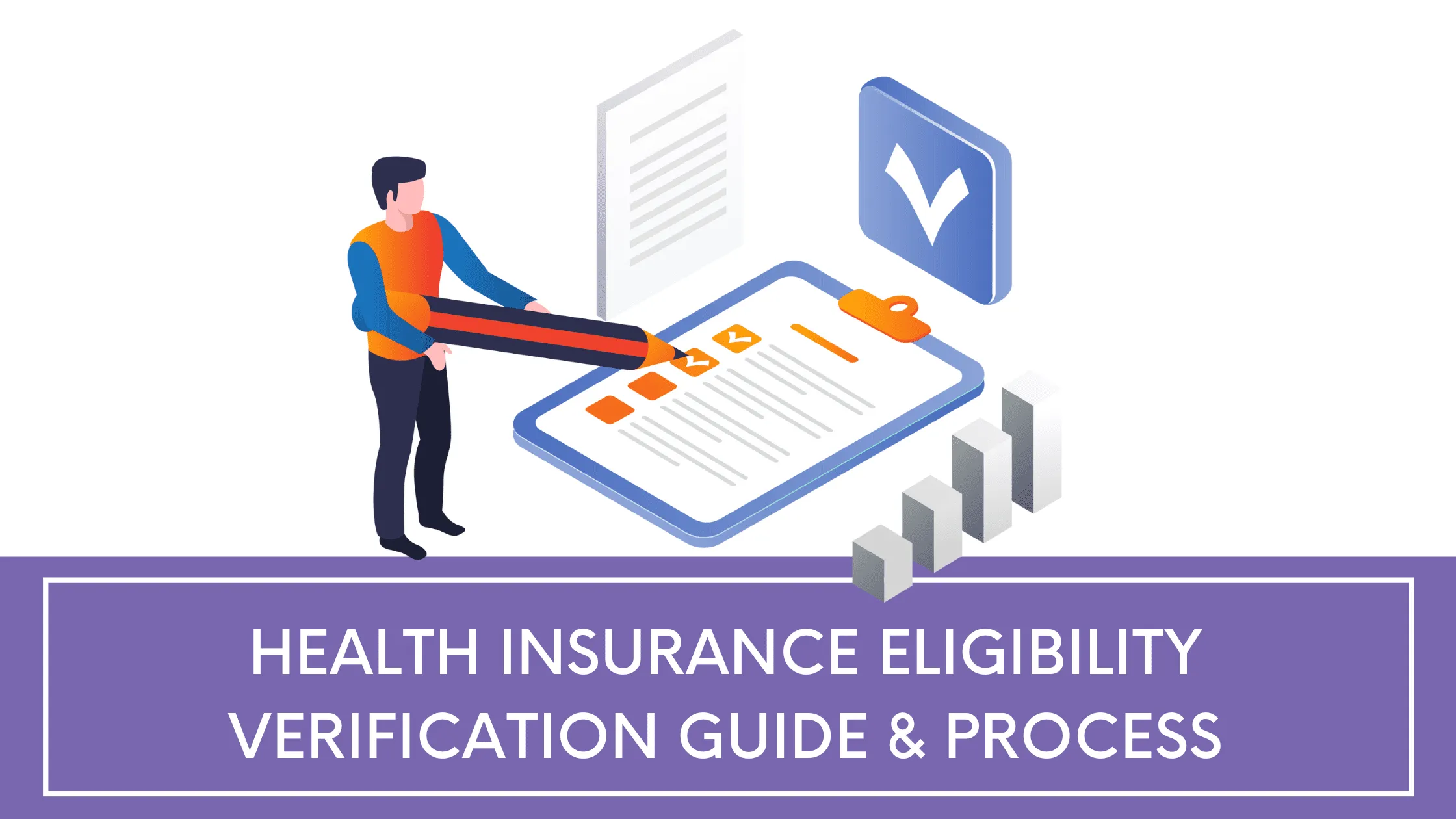
12 Essential Billing Guidelines for Physical Therapists

Table of contents
• Introduction
• Guideline #1: Submit Claims Electronically
• Guideline #2: Submit Clean Claims
• Guideline #3: Maintain Thorough Documentation
• Guideline #4: Utilize Fully Integrated Tools
• Guideline #5: Understand Payer Guidelines
• Guideline #6: Stay Current with Industry Changes
• Guideline #7: Monitor Claim Statuses
• Guideline #8: Prioritize Timely Follow-Up
• Guideline #9: Know Your Patients’ Insurance Plans
• Guideline #10: Address Denials Promptly
• Guideline #11: Stay Vigilant About Compliance
• Guideline #12: Invest in Staff Training
• Conclusion
Introduction
Physical therapists play a crucial role in the healthcare system. Not only do they help patients regain their health and mobility, but they also need to deal with the administrative side of things. And let me tell you, it’s not a walk in the park.
Accurate billing and claims are essential for the financial stability of a practice and for building trust with patients and insurance providers. So, it’s time to buckle up and dive into the 12 essential billing guidelines that every physical therapist should know.
Let’s start off with Guideline #1 – Submit Claims Electronically. This may seem like a no-brainer in the age of technology, but trust me, there are people out there who still prefer snail mail. Submitting claims electronically not only saves time but also ensures a smoother financial flow for your clinic. Plus, it eliminates the worry of meeting diverse payer deadlines and the potential for claim denials.
Now that we’ve submitted our claims electronically, it’s time for Guideline #2 – Submit Clean Claims. No, this doesn’t mean you should wipe your claims with a disinfectant wipe (although that might not be a bad idea). Clean claims refer to claims that are complete and accurate, without any errors or missing information.
Moving on to Guideline #3 – Maintain Thorough Documentation. Document, document, document. I can’t stress this enough. Thorough documentation not only helps you justify your requests for payment but also saves you from potential audits. So, take that extra few minutes to thoroughly describe your patient’s history, your skilled interventions, and your clinical decision-making process. Trust me, it’ll be worth it.
Guideline #4 – Utilize Fully Integrated Tools. It’s time to step up your game and embrace technology. Having fully integrated billing software accessible within your EHR makes managing multiple aspects of your clinic a breeze. It streamlines operations and saves you from headaches down the road.
Stay tuned as we continue our journey through the 12 essential billing guidelines for physical therapists. Oh, the suspense!
Guideline #1: Submit Claims Electronically
Submitting insurance claims electronically is a crucial step in ensuring the smooth financial flow of physical therapy clinics. Gone are the days of snail mail and endless paperwork. Now, with the power of technology, you can submit claims at the click of a button. Isn’t that amazing? No more waiting around for postal delays or worrying about lost documents. Plus, electronic submission allows for faster processing and quicker reimbursements. It’s like having a magical unicorn that grants all your billing wishes (well, almost). So, ditch the old-school methods and embrace the wonders of electronic claims submission. Your practice will thank you.
Guideline #2: Submit Clean Claims
Ah, the joy of submitting clean claims! It’s like presenting a flawless masterpiece to the insurance gods and praying that they shower you with swift reimbursements. So, what exactly does it mean to submit clean claims? Well, it’s pretty simple. Just make sure your claims are error-free, accurate, and fully complete. Don’t worry, we won’t judge if you want to do a little happy dance every time you hit that submit button.
But wait, there’s more! When we say “clean,” we’re not talking about removing stains or scrubbing claims with a magical cleaning solution. We mean that you need to cross all your T’s and dot all your I’s when it comes to filling out claim forms. So, double-check everything – patient information, dates, codes, and any other necessary details. Remember, even the tiniest mistake can result in a denied claim. And trust us, you don’t want to go down that road!
Oh, and one more thing – if you want to boost your chances of getting paid without any hiccups, make sure your documentation is spot on. Yes, that means you can’t just scribble some notes on a napkin and call it a day. Take your time to document everything accurately and thoroughly. Because when the auditors come knocking on your door (cue ominous music), you’ll be glad you put in that extra effort.
So, my fellow billing gurus, remember to submit clean claims and avoid the wrath of denied reimbursements. Your patients will thank you, your bank account will thank you, and hey, even the insurance gods might send you a little “thank you” note (okay, maybe not, but we can dream, right?). Stay diligent, stay accurate, and may your claims sail through the treacherous sea of billing with ease. Cheers to clean claims and hassle-free reimbursements!
Guideline #3: Maintain Thorough Documentation
Maintaining thorough documentation is like baking a cake – you need to follow the recipe or risk ending up with a soggy mess. In the case of physical therapy billing, meticulous documentation is essential to justify the services rendered and ensure error-free claims. So, be sure to document everything in detail, from the patient’s history to the skilled interventions and clinical decision-making process.
I know, it may sound tedious and time-consuming. But trust me, it’s worth it. Imagine trying to justify your requests for payment during an audit without proper documentation. It would be like trying to convince a cat to take a bath – nearly impossible! So take the time to thoroughly describe every aspect of your patient’s treatment, because it could make a big difference in securing your payments.
Oh, and make it a team effort! Billing is not a solo gig – it requires everyone in your practice to be on the same page. Teach your staff clinical terminology so that they can accurately understand and communicate the intricacies of billing. And if you’re planning to work with direct access patients, make sure you brush up on the specific guidelines for that too. Sharing your billing knowledge with your team will ensure smooth operations and accurate claims.
Now, go forth and document like a champ! Your thorough documentation will be your secret weapon against claim denials and delays. Plus, it’ll make your practice look like a well-oiled machine (and who doesn’t want that?). Just remember, documentation is like the icing on the cake – it may not be the most exciting part, but it’s definitely necessary for a sweet outcome. So, get those pens and keyboards ready and start documenting like a pro!
Guideline #4: Utilize Fully Integrated Tools
When it comes to billing, physical therapists need all the help they can get. And what better way to streamline the process than by using fully integrated tools? These nifty little solutions make life so much easier for therapists and administrators, allowing them to manage multiple aspects of their clinic with ease.
No more jumping between different software programs or drowning in paperwork. With fully integrated tools, you can have everything in one place, like a sweet technological oasis. This means less time wasted and more time doing what you actually love – helping patients get back on their feet. So, do yourself a favor and embrace the wonders of fully integrated tools. Your revenue management will thank you.
Guideline #5: Understand Payer Guidelines
Imagine being a physical therapist and having to deal with billing guidelines. Fun, right? Well, maybe not exactly fun, but definitely necessary. So, let’s dive into one of the guidelines that every physical therapist should know: Guideline #5: Understand Payer Guidelines.
Now, insurance payers, oh boy, they have their own set of rules and regulations when it comes to claims submission. It’s almost like deciphering a secret code. But hey, we signed up for this, didn’t we?
Understanding payer guidelines is crucial because it ensures that your claims are complete and accurate before submission. You wouldn’t want your claims to get denied just because you missed a tiny detail, would you? I mean, who needs money anyway, right?
By thoroughly familiarizing yourself with each payer’s guidelines, you can avoid claim denials and delays in reimbursement. It’s like playing a game of chess but with higher stakes and fewer knights.
So, stay on top of these guidelines and keep yourself updated with any changes. Because just like a chameleon changes its colors, these guidelines can change too. And trust me, you don’t want to be caught off guard.
Remember, understanding payer guidelines is like speaking their language. It’s like learning to communicate with a different species altogether. So, gear up and get ready to navigate the complex world of billing guidelines. Trust me, it’ll be the most thrilling adventure of your life. Okay, maybe not, but it’s still important.
And that’s it for Guideline #5: Understand Payer Guidelines. Stay tuned for the next thrilling installment of “12 Essential Billing Guidelines for Physical Therapists.” Trust me, it’s going to be epic.
Guideline #6: Stay Current with Industry Changes
The world of healthcare is like a whirlwind, constantly changing and evolving. And no, we’re not talking about the latest must-have accessory for doctors (although that would be pretty cool). We’re talking about insurance and billing regulations. Yep, those ever-changing guidelines that keep us on our toes.
Now, as a physical therapist, it’s crucial that you stay up-to-date with these changes. And no, we’re not asking you to be a psychic and predict what’s going to happen next (although that would be pretty useful too). We simply mean that you should be aware of any new policies, codes, or procedures that could affect your billing practices.
Why, you ask? Well, for starters, staying informed ensures that you submit your claims accurately and in compliance with the latest guidelines. This way, you can avoid those annoying claim denials and delays that can seriously hurt your revenue flow.
But hey, we get it. Keeping up with all these changes can be overwhelming. It’s like trying to catch a squirrel on a Sunny afternoon. They’re just so darn squirmy. However, ignorance is not bliss when it comes to billing guidelines. So, buckle up and embrace the challenge of staying current.
To start, brush up on your coding skills. Familiarize yourself with the relevant CPT (Current Procedural Terminology) codes and ICD-10-CM (International Classification of Diseases, Tenth Revision, Clinical Modification) codes. These codes are like the secret language that insurance companies understand. By knowing them inside out, you can ensure that your services are accurately represented in your billing claims.
And hey, just because we’re talking about codes doesn’t mean we have to be all serious and boring. Who said coding can’t be fun? Why not turn it into a game of “Guess the Code” with your colleagues? Or maybe even make up your own little dance moves for each code. We promise it’ll make the whole process more enjoyable. Trust us, coding doesn’t have to be a snooze-fest.
In addition to coding, make it a habit to stay informed about any changes in the insurance domain. Keep an eye out for policy updates, code revisions, and new procedures that could impact your billing practices. This way, you can adjust your strategies accordingly and ensure that your claims are shipshape and ready to sail smoothly through the reimbursement process.
So, don’t be like that friend who’s perpetually stuck in the past, rocking the same old hairstyle from the 80s. Embrace the present and stay current with industry changes. Your billing practices will thank you, and who knows, you might even become the go-to guru for all things billing in your circle.
Guideline #7: Monitor Claim Statuses
Keeping an eye on the progress of your submitted claims is like stalking your crush’s social media profile. You gotta be vigilant and proactive, folks! Monitoring claim statuses helps you catch any potential issues early on, so you can swoop in like a hero and save the day. No one likes claim rejections or delays, so stay on top of your game and prevent those pesky denials. Trust me, it’s much better than dealing with the aftermath of a rejected claim. Keep those revenue cycles running smoothly!
Now, let’s move on to the next guideline. But hey, don’t forget to check on those claims. It’s like checking your own social media notifications, but with a purpose.
Guideline #8: Prioritize Timely Follow-Up
Ah, the joy of timely follow-up! Don’t you just love chasing after insurance companies to get your rightful payments? It’s like a thrilling game of cat and mouse, except you’re the mouse and the insurance company is the cat who wants to gobble up your hard-earned money.
But fear not, my fellow physical therapists, for there is a way to conquer this never-ending battle. All you have to do is prioritize timely follow-up. Yes, I know it sounds boring and tedious, but trust me, it’s worth it.
When you submit a claim, it doesn’t magically disappear into thin air. It goes on a little adventure through the vast world of insurance bureaucracy. And sometimes, claims get stuck, lost, or forgotten along the way. That’s where timely follow-up comes in.
By monitoring claim statuses regularly, you can catch any potential issues before they turn into full-blown disasters. You can be the knight in shining armor, swooping in to save the day and prevent claim rejections. It’s like being a superhero, except instead of fighting villains, you’re fighting red tape and bureaucracy.
So, my friends, don’t underestimate the power of timely follow-up. It may not be the most glamorous part of your job, but it’s an essential one. Plus, think of all the satisfaction you’ll get from outsmarting those pesky insurance companies and securing your rightful payments. It’s a win-win situation!
Now go forth, my fellow physical therapists, and conquer the world of timely follow-up. May your claims be error-free, your revenue be plentiful, and your practice be a shining beacon of success. You’ve got this!
Guideline #9: Know Your Patients’ Insurance Plans
Ah, insurance plans! The intricate web of confusion that physical therapists have to navigate. It’s as if they want to make the process as difficult as possible just to test our patience. But fear not, my fellow therapists! Knowing your patients’ insurance plans is crucial to ensure error-free claims and avoid any unforeseen billing catastrophes.
So, what exactly does it mean to know your patients’ insurance plans? It means diving deep into the abyss of coverage details and deciphering the cryptic language of deductibles, copays, and out-of-network benefits. It means becoming Sherlock Holmes and unraveling the mysteries of insurance policies.
Why is this important, you ask? Well, imagine this: you provide an amazing therapy session to a patient, thinking you’ll get paid in full for your services. But hold on! Little did you know that your patient’s insurance plan only covers a limited number of sessions or doesn’t cover certain treatments at all. Now you’re left with a not-so-happy patient and a not-so-happy bank account.
By knowing your patients’ insurance plans inside out, you can avoid these billing nightmares. You can communicate with your patients upfront about what their insurance covers and what it doesn’t. This way, there are no surprises, and everyone is on the same page.
But wait, there’s more! Knowing your patients’ insurance plans also helps you determine the most appropriate treatment options. If you know that a specific treatment won’t be covered by insurance, you can discuss alternatives with your patient and come up with a plan that works for both of you.
So, my dear fellow therapists, don your detective hats and delve into the mysterious world of insurance plans. The more you know, the smoother your billing process will be. And trust me, avoiding billing catastrophes is worth every minute of insurance plan investigation. Now go forth and conquer the insurance jungle!
Guideline #10: Address Denials Promptly
Addressing claim denials promptly is crucial for physical therapists to ensure a smooth reimbursement process. Delaying or ignoring denials can lead to financial loss, frustration, and sleepless nights. It’s like leaving a door wide open for a thief to enter your house and steal all your valuables. So, let’s not make it easy for the denials to rob us of our hard-earned money. Instead, let’s face them head-on and give them a piece of our mind. We don’t want them lurking in the background, do we? No, we want to shine a bright spotlight on them and show them who’s the boss. By addressing denials promptly, we can prevent them from becoming bigger problems and ensure a healthy revenue flow. So, let’s put on our detective hats and get to the bottom of these denials. Together, we can conquer them and claim what’s rightfully ours.
Guideline #11: Stay Vigilant About Compliance
Compliance is a crucial aspect of the billing process that physical therapists must stay on top of. Remember those guidelines and regulations you thought you could ignore? Well, turns out they actually matter! So, don’t fall into the trap of thinking compliance is just a fancy word. It’s there to ensure that you’re adhering to the standards set by insurance payers and regulatory bodies.
Keep yourself updated on the latest compliance requirements and make sure your clinic is following them diligently. Ignorance is definitely not bliss when it comes to compliance issues. Stay out of trouble by investing some time and effort into understanding the rules, and save yourself from unnecessary headaches.
Oh, and don’t forget about those lovely audits that insurance companies like to surprise you with. They’re not just for fun, you know. Audits are a way for payers to ensure that you’re playing by their rules. So, when it comes to documentation, be thorough and detailed. Show them the love!
Did you know that your documentation can actually save you from potential audits? Yes, my friend, it’s true! When you document everything with utmost detail, you’re basically building a shield against audit nightmares. Those auditors won’t stand a chance against your impeccable documentation skills. So, go ahead and show off your clinical decision-making process, your skilled interventions, and all that jazz. It’s time to strut your stuff!
And hey, it’s not just your responsibility. Make it a team effort! Teach your staff the language of billing and coding. Empower them with the knowledge they need to contribute to error-free claims. After all, a strong team is what makes a practice successful. So, gather the troops and march towards compliance glory!
Just a friendly reminder: compliance isn’t something you can check off your to-do list and forget about. It’s an ongoing process that requires constant attention. So, stay vigilant, my friend, and embrace the world of compliance as your ally in ensuring error-free claims.
Now that we’re done with this guideline, let’s move on to the next! Trust me, you don’t want to miss out on the excitement that awaits you. So, stay tuned for more billing shenanigans!
Guideline #12: Invest in Staff Training
Investing in staff training is crucial for physical therapists to stay at the top of their game. With ever-evolving billing guidelines and regulations, it’s essential for therapists and their staff to receive proper training to handle the complexities of the reimbursement process. From understanding coding standards to staying updated with payer guidelines, a well-trained team can navigate through the billing intricacies with ease.
But hey, let’s not forget that staff training doesn’t have to be as dull as a snooze-inducing lecture. How about turning it into a fun-filled workshop where therapists can learn while playing a game of “Guess the Correct Code”? Or maybe a hilarious skit where they act out different billing scenarios and learn from each other’s mistakes? The possibilities are endless!
By investing in staff training, physical therapists can ensure that their team is well-equipped with the knowledge and skills needed to submit error-free claims. And trust me, a well-trained and competent team is the secret sauce to efficient revenue management.
So, don’t skimp on training! It’s a small investment that goes a long way in ensuring successful billing practices and maintaining a healthy bottom line. And who knows, maybe your staff will thank you for making their training sessions exciting and engaging!
Wenour offers expert guidance in these areas, empowering healthcare providers to overcome challenges, optimize reimbursement, and deliver the best standards of care to their patients. By adhering to compliance and regulatory guidelines, mastering meticulous documentation, exploring coding systems, and embracing innovative digital solutions, healthcare providers can achieve favorable reimbursement results and financial stability. With Wenour’s support, the complex world of DME billing can be simplified and patient care and financial success prioritized.
Conclusion
To sum it all up, these 12 essential billing guidelines for physical therapists are like the secret recipe to a successful and error-free claims process. From submitting claims electronically to staying current with industry changes, each guideline plays a vital role in ensuring smooth revenue cycles and maintaining financial practice health. So, embrace these guidelines, master the art of billing, and bid adieu to claim denials and reimbursement delays. Trust me, your practice will thank you for it!





























